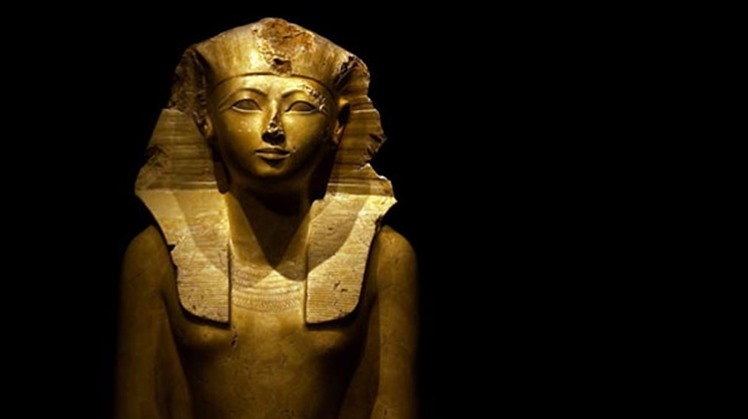Queen Hatshepsut is the powerful Egyptian queen who married her brother, King Tuthmosis II, and was called the Great Royal Wife, and upon his death she was the guardian of the throne of his son, the child King Thutmose III, who was nine years old at the time, and she ruled next to him from "1479 to 1457 BC." ,
Dr. Mamdouh al-Damaty says, in his book “Queens of Egypt” that according to Egyptian religious traditions, Hatshepsut was considered outside the religious legitimacy of the rule, as the ruling king must be a male representative of the god Horus, the lord of property, in order to grant religious legitimacy and acceptance among the people. Hatshepsut had some political and religious treatments to protect her sitting on the throne, especially as she became a regent on the throne of King Thutmose III, and given that he was a young child, and the mother of one of the concubines of King Thutmose II, with her intelligence and ambition to rule, which she may have begun to practice during the reign of her brother and her weak husband Tuthmosis the Second, the political conditions in the ruling house created the opportunity for her to sit on the throne and to rule alone, even if it was an official partnership with the young king.
The book explained that Queen Hatshepsut was not only the legitimate daughter of Thutmose I, but was also a holy wife to Amun, an important priestly position that appeared at the beginning of the Eighteenth Dynasty, and was usually occupied by one of the king's daughters and sisters.
Hatshepsut's ambition and desire to rule with the young age of Thutmose III, prepared suitable conditions for her that enabled her independence to rule, especially as she felt in herself that she was the owner of royal blood and the right to inherit the throne, and with the end of the second year of the rule of the child king, Hatshepsut changed She placed her from regent on the throne to a co-ruling queen with Thutmose III, and of course she was the actual ruler of the country.
Hatshepsut extracted for herself some statesmen who were loyal to her and enabled her, of course, with a return to raise their position in the state. One of the most important of these men was “We will die.” He was the director of the House of Amun. He was an ambitious man who knew how to manage matters for his property and for himself. The rise of the star of Senmut and his name was associated with many of the works and assignments of Hatshepsut, so he became the first educator of Hatshepsut’s daughter, Princess Neferura, and the supervisor of the works of Amun, and the director of the king’s works in the Temple of Amun, and then supervised the buildings of Hatshepsut, and was the architect of the temple of Deir al-Bahari, and all these jobs enabled him In order for him to have a decision to rule the country and perhaps alone in some of his decisions without referring to his queen, and more than this, he represented himself in devotional conditions behind the doors of some internal chapels in the temple of Deir al-Bahari, an unparalleled daring, and he was proud of his luck with Hatshepsut and that he was looking at the rooms of the royal palace, and this may have been the reason for his dramatic disappearance at the end of the reign of Hatshepsut, as she did not accept such abuse from a servant, no matter how high the position she had given her, especially since he had performed the role assigned to him by her.
During the reign of Queen Hatshepsut, Egypt lived one of the most brilliant eras of Egyptian civilization over a period of 12 years and nine months, as stated in the history of Manetho, who spent them ruling Egypt, surrounded by greatness and replete with glory. She disappeared from the throne in mysterious circumstances that archaeologists have not yet been able to know for sure.
The era of Hatshepsut was distinguished by many architectural constructions, which illustrate the extent of the prosperity of her era, and the scenes and inscriptions that were represented on it provide us with a clear idea of the history and achievements of Queen Hatshepsut, and as usual for the kings of the modern state, Hatshepsut also contributed to the Karnak buildings, by constructing the eighth pylon at Karnak, and erecting a boat cabin for the sanctuary of Amun Ra, as it has many monuments in Mom Ombo, Red Kom, El Kab, Armant and Elephantine, but the most important monuments of Hatshepsut is her famous funerary temple in Deir el-Bahari, which is one of the most immortal of her works with its unique design and wonderful inscriptions.
 Tue, Mar. 8, 2022
Tue, Mar. 8, 2022